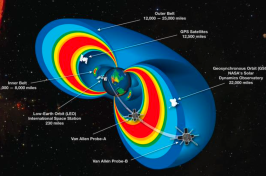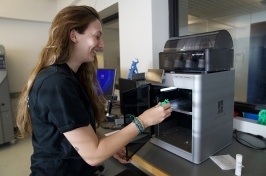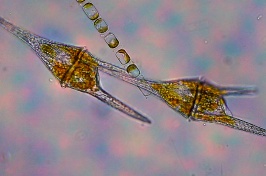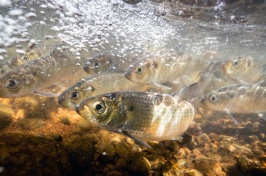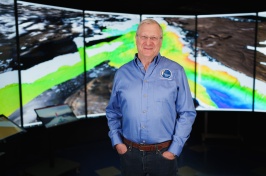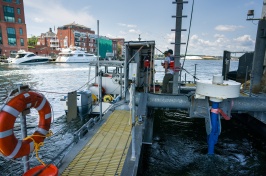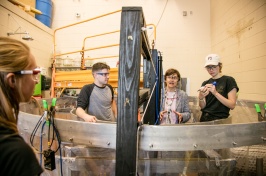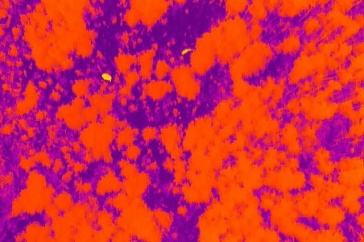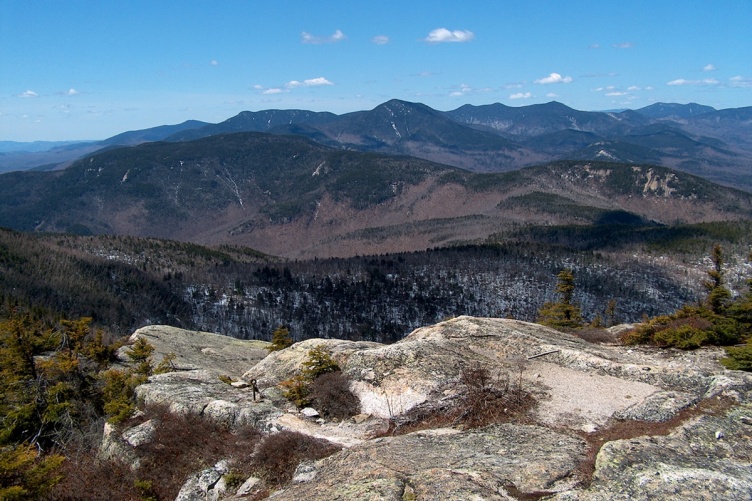
The USDA Forest Service, which awarded the grant, manages New Hampshire’s White Mountain National Forest. Here is the Sandwich Range.
One of the most important factors in addressing climate variability is being able to estimate carbon sequestration -- the long-term storage of carbon in the environment. Researchers with the NH Agricultural Experiment Station are tackling this issue using a novel combination of census and remote sensing data to investigate how forests change and, thus, make better estimates of carbon sequestration.
The research is being conducted by senior demographer Kenneth Johnson, professor of sociology, and Mark Ducey, professor of forest biometrics and management. The scientists have received a $150,000 grant from the USDA Forest Service to conduct the project “Demographic Transformation in the Forested Regions of Nonmetropolitan America: Implications for Carbon Sequestration, Forest Harvesting and Ecosystem Services.”

Rural America contains 72 percent of all forest lands in the United States. In addition to serving as a critical carbon sequestration depository, these forests provide watershed protection and support rural economies through timber and fiber production. More than 100 million urban residents live in close proximity to rural recreational and amenity areas.
“Rural recreational and amenity areas have experienced the greatest population increase in rural America for each of the last four decades. Such population growth has been supplemented by the extensive development of second homes in many amenity-rich forested regions of rural America. With the impending retirement of 70 million Baby Boomers, there is every expectation that population growth rates in forested recreational amenity areas will accelerate,” Johnson said.
The goal of the research is to understand how demographic change in rural America, including amenity-driven migration, has modified forest cover, carbon storage, and timber harvesting patterns. Initially, Johnson and Ducey will focus on forests in the northeastern United States and the Great Lake states.
“Our research will provide a better understanding of recent and likely future trajectories of forest development at the landscape scale, with particular attention to the relationship between forest ownership, protection status, and proximity to national forests. It also will examine the impact of urbanization and landscape change on rural America. And, it will have important implications for understanding the impact of population and housing change on future delivery of wood and fiber, on carbon sequestration, and on forest resiliency to disturbance,” Johnson said of the interdisciplinary research project.
The researchers said they suspect rural demographic change, including in high-amenity areas with extensive second-home development, have impacted forest cover and carbon sequestration in different ways. For example, in rural recreational areas they hypothesize population and housing growth have resulted in a decline in forest harvesting, attended by a slight loss in forest cover and enhanced carbon storage in the remaining forests. However, such enhanced carbon storage also is likely to be accompanied by changes in forest characteristics such as less dense forests, indicating a loss of resilience to fire, wind, and disease.
“Because national forests represent key high-amenity regions, we hypothesize these effects will be particularly strong on private lands near national forest boundaries,” Johnson said.
The researchers will combine demographic and remote sensing data with inventory data from the USDA Forest Service Forest Inventory and Analysis using statistical models to examine the spatial and temporal association of demographic and housing change with forest characteristics and patterns of forest harvest.
“In our preliminary analysis, we found that combining both remote sensing and census data on small-area populations and whether the housing is second homes or primary residences provides better models of carbon sequestration than just using remote sensing data,” Ducey said.
The grant builds on previous research funding provided by the NH Agricultural Experiment Station in the UNH College of Life Sciences and Agriculture, UNH Research Office, National Science Foundation Experimental Program to Stimulate Competitive Research (EPSCoR), UNH Carsey School of Public Policy, and the UNH College of Liberal Arts.
Founded in 1887, the NH Agricultural Experiment Station at the UNH College of Life Sciences and Agriculture is UNH’s original research center and an elemental component of New Hampshire's land-grant university heritage and mission. We steward federal and state funding, including support from the USDA National Institute of Food and Agriculture, to provide unbiased and objective research concerning diverse aspects of sustainable agriculture and foods, aquaculture, forest management, and related wildlife, natural resources and rural community topics. We maintain the Woodman and Kingman agronomy and horticultural farms, the Macfarlane Greenhouses, the Fairchild Dairy Teaching and Research Center, and the Organic Dairy Research Farm. Additional properties also provide forage, forests and woodlands in direct support to research, teaching, and outreach.
-
Written By:
Lori Tyler Gula, PhD | NH Agricultural Experiment Station | lori.gula@unh.edu | 603-862-1452







